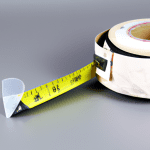What is a 90 Degree Angle for Injection: A Comprehensive Guide
When it comes to medical injections, precision is key. One important aspect of administering injections is the angle at which the needle is inserted into the skin. In this comprehensive guide, we will explore what a 90 degree angle for injection is and why it is crucial in the medical field.
Understanding the Basics
Before we delve into the specifics of a 90 degree angle for injection, let’s first understand the basics. When administering an injection, the needle is typically inserted into the subcutaneous tissue, which is the layer of fat just beneath the skin. The angle at which the needle is inserted can vary depending on the type of injection and the specific medical procedure.
What is a 90 Degree Angle for Injection?
A 90 degree angle for injection refers to inserting the needle perpendicular to the skin surface. This means that the needle is inserted straight in, forming a right angle with the skin. This angle is commonly used for injections that require the medication to be delivered directly into the muscle, such as intramuscular injections.
Importance of a 90 Degree Angle
Using a 90 degree angle for injection is crucial for several reasons. First and foremost, it ensures that the medication is delivered to the intended target area, such as the muscle. This is particularly important for medications that need to be absorbed quickly or have a specific site of action.
Additionally, using the correct angle helps minimize the risk of complications. Inserting the needle at an incorrect angle can result in pain, bruising, or even damage to surrounding tissues. By using a 90 degree angle, healthcare professionals can ensure that the injection is administered safely and effectively.
When to Use a 90 Degree Angle
A 90 degree angle is typically used for injections that require the medication to be delivered directly into the muscle. This includes vaccines, certain antibiotics, and other medications that need to be absorbed quickly or have a specific site of action within the muscle tissue.
It’s important to note that not all injections require a 90 degree angle. Subcutaneous injections, for example, are typically administered at a 45 degree angle. It is crucial for healthcare professionals to follow the specific guidelines and instructions provided for each medication and injection technique.
Conclusion
In summary, a 90 degree angle for injection refers to inserting the needle perpendicular to the skin surface. This angle is commonly used for injections that require the medication to be delivered directly into the muscle. By using the correct angle, healthcare professionals can ensure the safe and effective administration of medications. It is important to follow specific guidelines and instructions provided for each injection technique to minimize the risk of complications.




